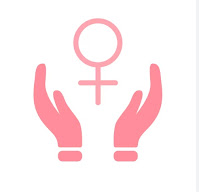Fast Fact Friday - Women's History Month Edition
Women's History Month: Shocking Fast Facts About Women's Health
March is Women’s History Month, a time to honor the achievements, struggles, and resilience of women throughout history. While we often celebrate social and political milestones, one area that remains overlooked is women’s health—an issue riddled with medical bias, delayed diagnoses, and shocking statistics that few people know. In honor of Women’s History Month, we’re uncovering four eye-opening facts about women’s health that highlight the urgent need for awareness and change.
1. Women’s Heart Health Crisis: The Silent Killer
Heart disease is the #1 killer of women, yet most people still associate it with men. Women are more likely than men to die after a heart attack because their symptoms—like nausea, jaw pain, and shortness of breath—are often dismissed or misdiagnosed. Even more alarming, nearly 50% of women who have heart attacks experience no chest pain, making it harder to detect and treat in time. Despite this, women continue to be underrepresented in heart disease research, leaving gaps in prevention and treatment strategies. Understanding the unique warning signs can be the difference between life and death.
2. Autoimmune Disorders: The Gender Bias in Medicine
Did you know that 80% of people diagnosed with autoimmune diseases are women? Disorders like lupus, multiple sclerosis, and rheumatoid arthritis overwhelmingly affect women, yet medical research has historically focused on men. On average, it takes four years for a woman to get an accurate autoimmune diagnosis—often after being dismissed by doctors or misdiagnosed with anxiety. Women’s immune systems are biologically more reactive than men’s, making them more susceptible to these diseases, yet treatment plans remain outdated due to lack of research. The gender gap in medicine is causing unnecessary suffering, and it’s time for change.
3. The Deadly Delay in Women’s Cancer Diagnosis
Women face higher misdiagnosis and late-diagnosis rates than men for many cancers, leading to higher mortality rates. Lung cancer, for example, is the leading cause of cancer death in women, and non-smokers who develop lung cancer are disproportionately female—yet most awareness campaigns still focus on smoking risks. Meanwhile, Black women are 40% more likely to die from breast cancer than white women, despite similar diagnosis rates, due to disparities in early detection and treatment access. The medical community’s slow response to these issues is costing women their lives.
4. The Truth About Women’s Pain: It’s Not “All in Your Head”
Women’s pain is routinely ignored and downplayed by the medical system, often with devastating consequences. Studies show that women wait an average of 16 minutes longer than men in emergency rooms before receiving pain medication. Even worse, when women report pain, they are more likely to be prescribed antidepressants instead of pain relief, reinforcing the false stereotype that women’s pain is emotional rather than physical. A shocking example is endometriosis, a condition affecting 1 in 10 women, which takes an average of 10 years to diagnose because doctors dismiss severe pain as "normal period cramps.” This medical bias is causing prolonged suffering and delaying lifesaving treatments.
Why This Matters for Women’s History Month
Women have made incredible strides in history, but when it comes to healthcare, there’s still a long way to go. From life-threatening misdiagnoses to research gaps that leave women suffering in silence, these fast facts prove that women’s health is a history lesson still being written. This Women’s History Month, let’s raise awareness, demand better healthcare, and fight for a future where women’s lives are prioritized—not ignored.


This is such good information! I needed to read this!!
ReplyDelete